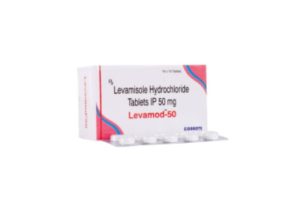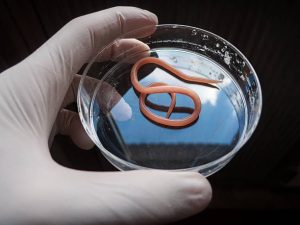
Ceftriaxone Overview:
Description:
Ceftriaxone is a third-generation cephalosporin antibiotic with broad-spectrum activity against Gram-positive and Gram-negative bacteria. It works by inhibiting bacterial cell wall synthesis, leading to cell lysis and death. Ceftriaxone is commonly used for serious infections and has the advantage of once-daily dosing due to its long half-life.
Available Forms & Strengths:
- Injection (IM/IV):
- 250 mg
- 500 mg
- 1 g
- 2 g
- Vial for reconstitution (for injection preparation)
Uses:
- Respiratory tract infections (e.g., pneumonia)
- Urinary tract infections (complicated and uncomplicated)
- Skin and soft tissue infections
- Sepsis
- Meningitis (bacterial)
- Gonorrhea
- Bone and joint infections
- Surgical prophylaxis (prevention of infection during surgery)
Side Effects:
- Nausea and vomiting
- Diarrhea
- Injection site reactions (pain, redness)
- Rash
- Increased liver enzymes
- Rare: Pseudomembranous colitis
Dosage:
- Adults: 1-2 g once daily or divided into two doses (depends on infection severity).
- Gonorrhea: 250 mg IM as a single dose.
- Meningitis: 2 g IV every 12 hours.
- Dosage adjustments may be necessary for patients with kidney or liver impairment.
Contraindications:
- Hypersensitivity to ceftriaxone, other cephalosporins, or any components of the formulation.
- Neonates (infants less than 28 days old) with hyperbilirubinemia or who are receiving calcium-containing IV solutions (risk of precipitation).
Warnings:
- Allergic Reactions: Risk of serious allergic reactions, including anaphylaxis. Cross-reactivity may occur in patients with penicillin allergies.
- Clostridium difficile-associated diarrhea: May occur with prolonged use.
- Biliary Sludge Formation: Ceftriaxone can precipitate in the gallbladder, causing biliary sludge or gallstones.
- Calcium Precipitation: Ceftriaxone can form precipitates with calcium-containing solutions, which can cause complications.
Special Instructions:
- Administer ceftriaxone with caution in patients with a history of gastrointestinal disease, particularly colitis.
- Monitor kidney and liver function, especially with long-term use.
- Do not mix or administer simultaneously with calcium-containing IV solutions.
- Always reconstitute the powder according to the manufacturer’s instructions before use.
- Complete the full course of therapy even if symptoms improve early to avoid bacterial resistance.







